BAYEUX
THE
BAYEUX TAPESTRY
It would be remiss not to mention a
work of art, produced at about the time of William's conquest of
England – the Bayeaux Tapestry.
It is exhibited in the Centre
Guillame-le-Conquérant (William the Conqueror Centre), in the small
town of Bayeux, situated in Normandy, just west of Caen and close to
the beaches of D-Day. Actually, the tapestry depicts not only
William's conquest of England at the Battle of Hastings in 1066 (14
October), but precedes that account with details of what led up to
the invasion, the preparations, and finally the battle itself.
The Keepers of the Tapestry believe
tit was begun the day after the battle, and took about ten years to
complete. It is actually a work of embroidery, as opposed to a
full-scale tapestry, but its size and story have given it heroic
proportions.
It measures one foot eight inches
high (50 cm.), and is nearly 230 feet long (70m.). Composed of nine
pieces of linen, featuring 58 known pieces of the story, the actual
ending has possibly been lost (William's coronation in Westminster
Abbey, Christmas Day, 1066).
Briefly, it details how the English
King Edward the Confessor had promised the throne to William of
Normandy. Harold delivers the news to William in Normandy, returns
to England. Edward dies, Harold takes the throne, and William
invades at Hastings. All of this is depicted in the “tapestry.”
With no rebuttal available, some view the entire panorama as “Norman
propaganda.” Others view it as a major and serious work of art.
Here are a few excerpts from that piece of linen:
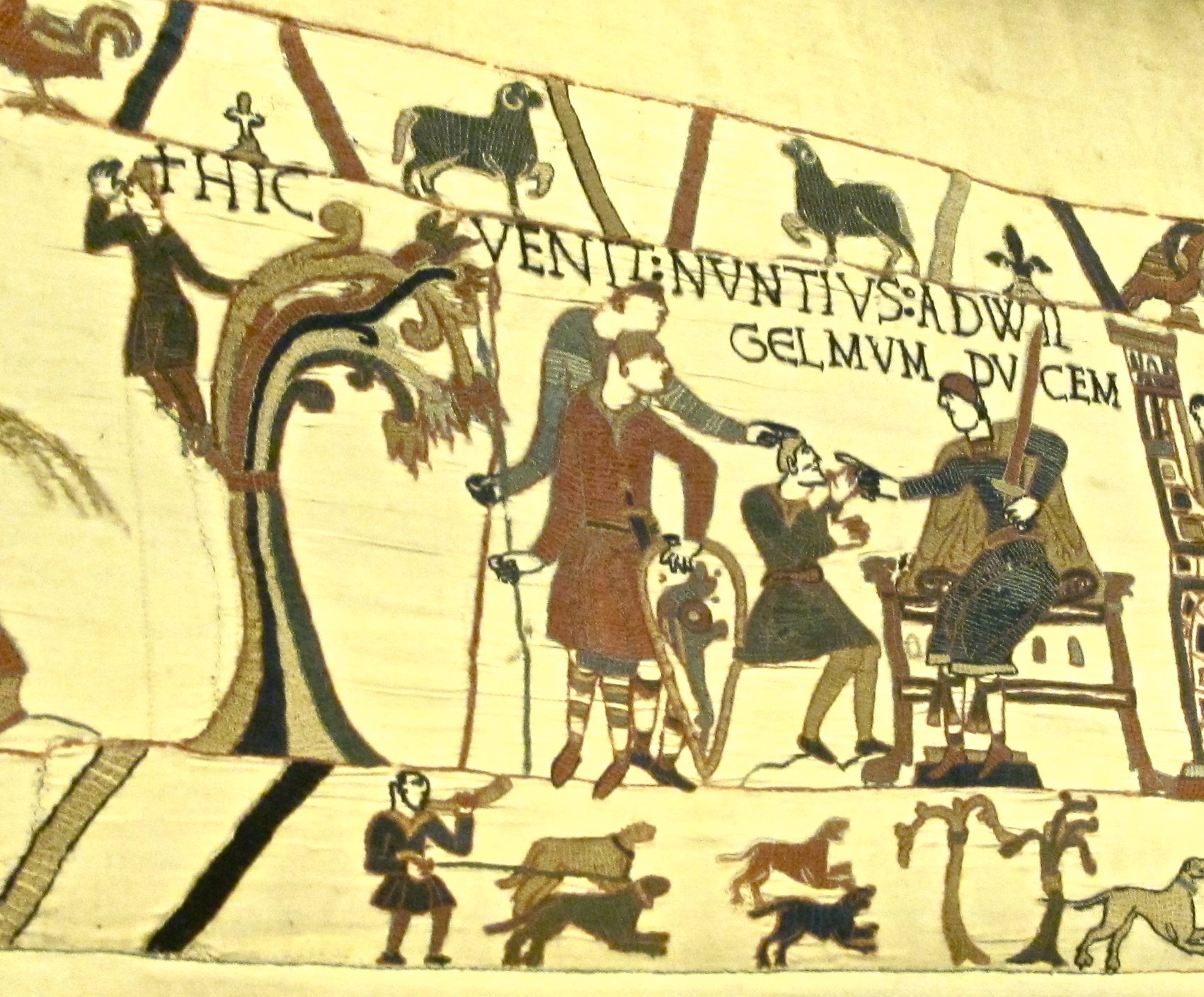
This scene
depicts William agreeing to pay a ransom for Harold, who had been
shipwrecked and held for ransom, while attempting to give William the
news of his succession to the English throne.

After
landing at Hastings, William's soldiers leave to engage Harold.

The
Normans attack the English, but are initially repulsed.
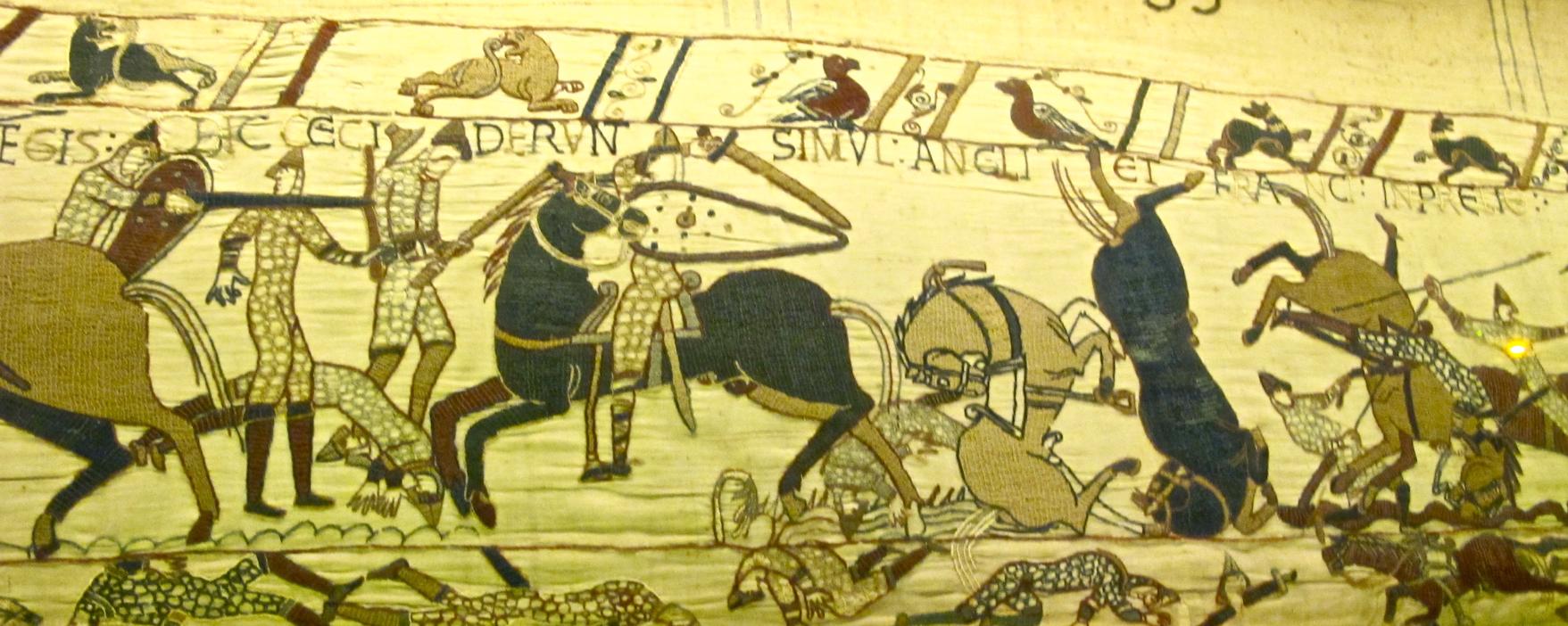
Norman soldiers and horses become
trapped in a marshy ditch built by the English. Bodies are strewn
about the tapestry.

After a false report of William's
death, the French fight back. William orders his archers to aim
high, to avoid their arrows falling uselessly against leather
shields.
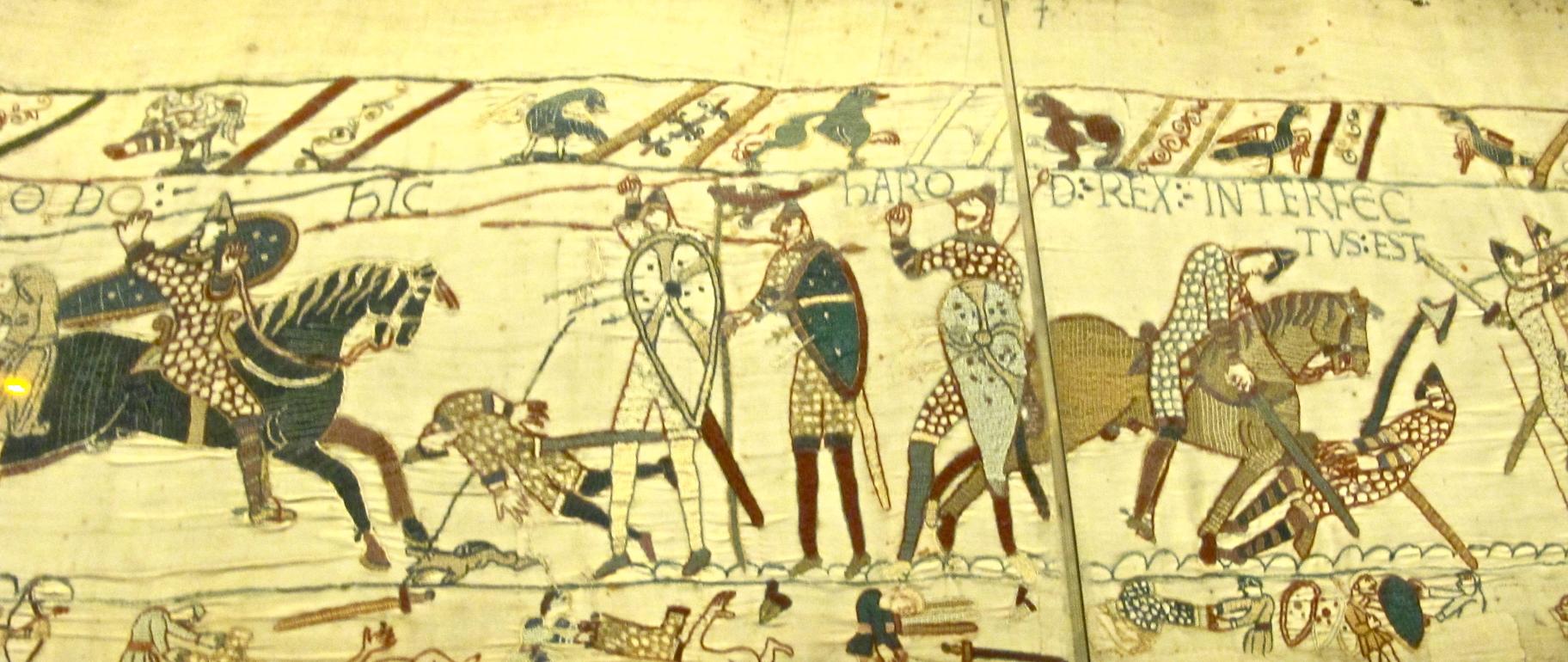
The
English are slaughtered.
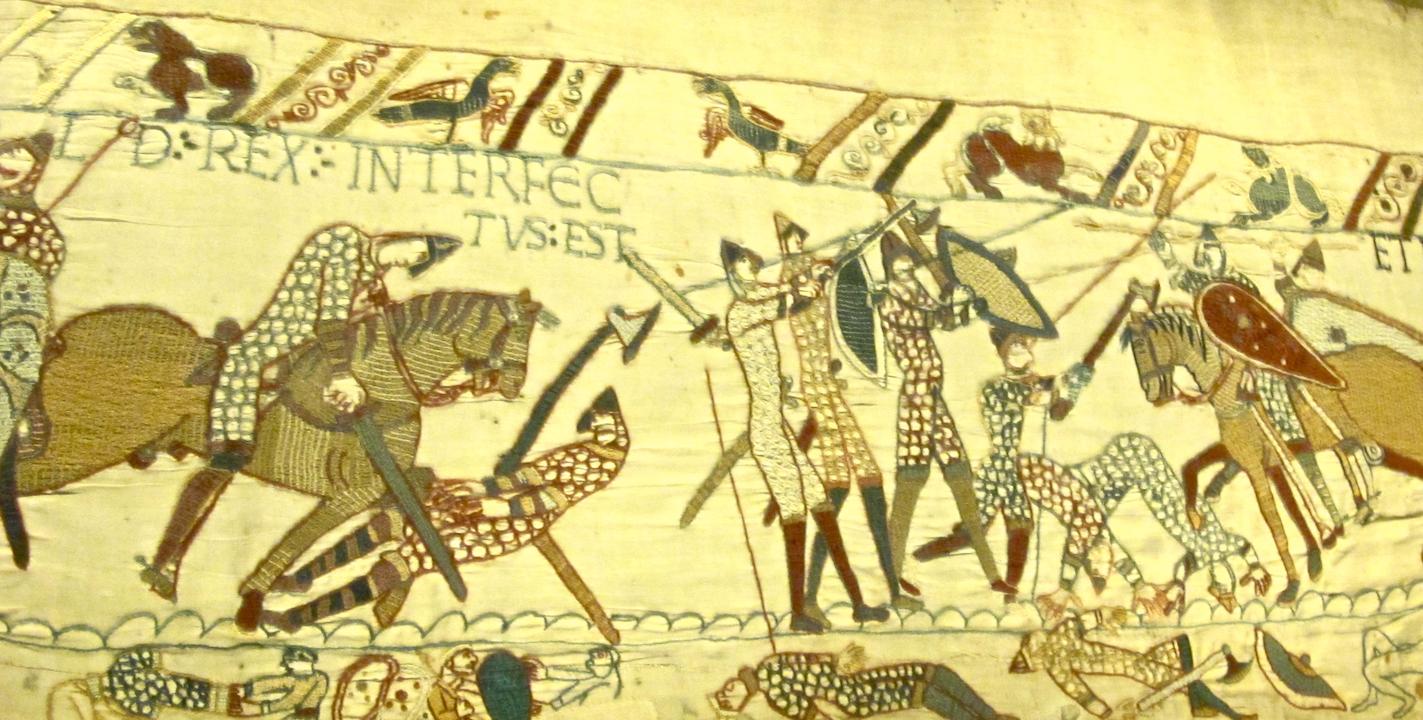
Harold is shot in the eye, the arrow
pierces his brain, and William becomes the first Norman King of
England.
First account of the tapestry (wall
hanging would perhaps be more appropriate) is its use in decorating
the nave of Bayeux Cathedral, consecrated in 1077. During the French
Revolution it was almost used as a wrap-around for a wagon, to keep
the rain out, but was saved at the last minute by a member of the
City Council. As we are still learning today (2011), “revolutions”
can be tricky events. Napoleon took it to the Louvre for exhibition
in 1803, but it was subsequently returned to Bayeux.
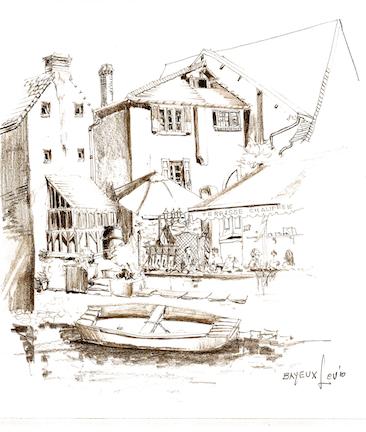
A small sketch I did on the banks of
the river Aure, which runs just in front of the exhibit Centre.








